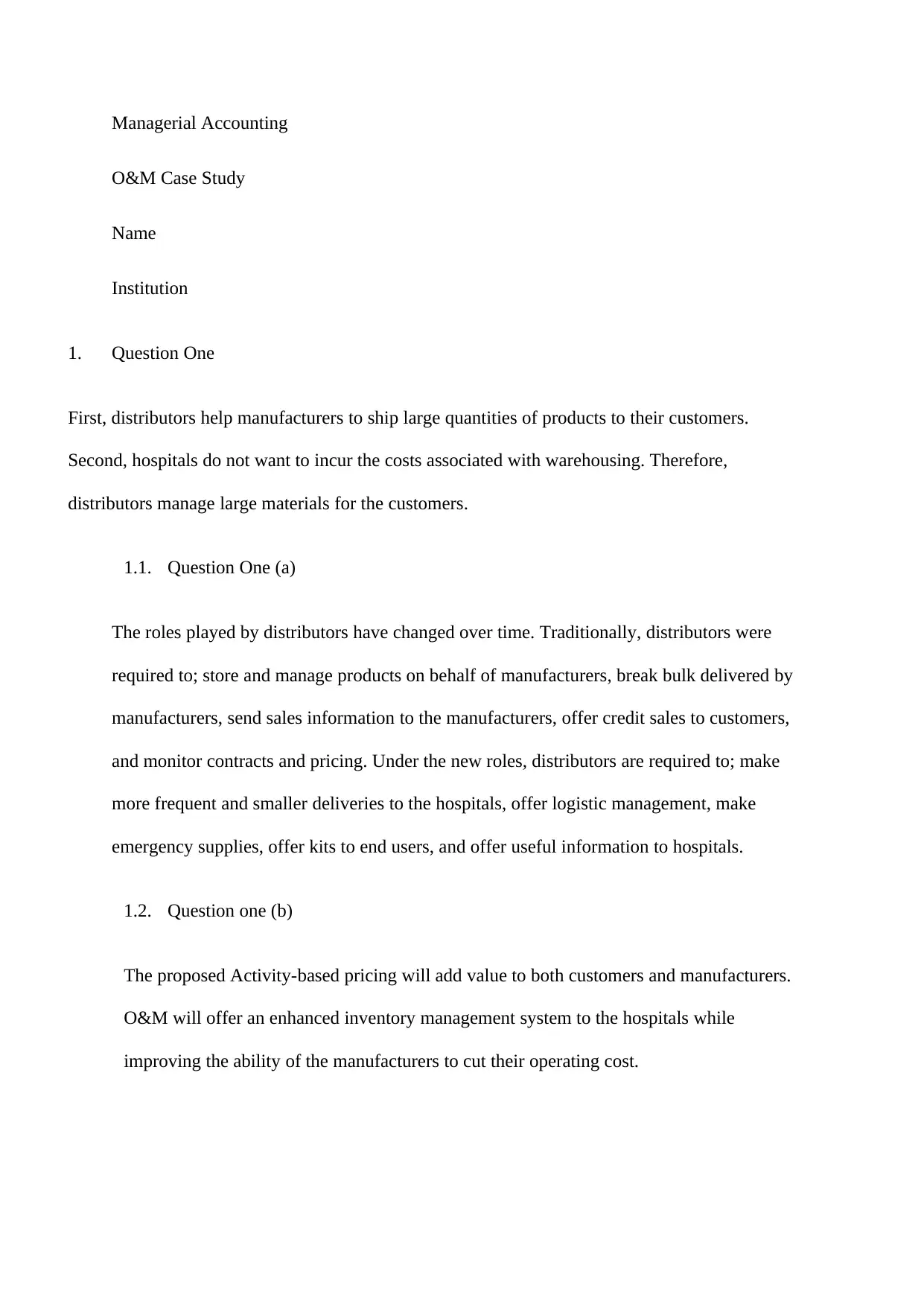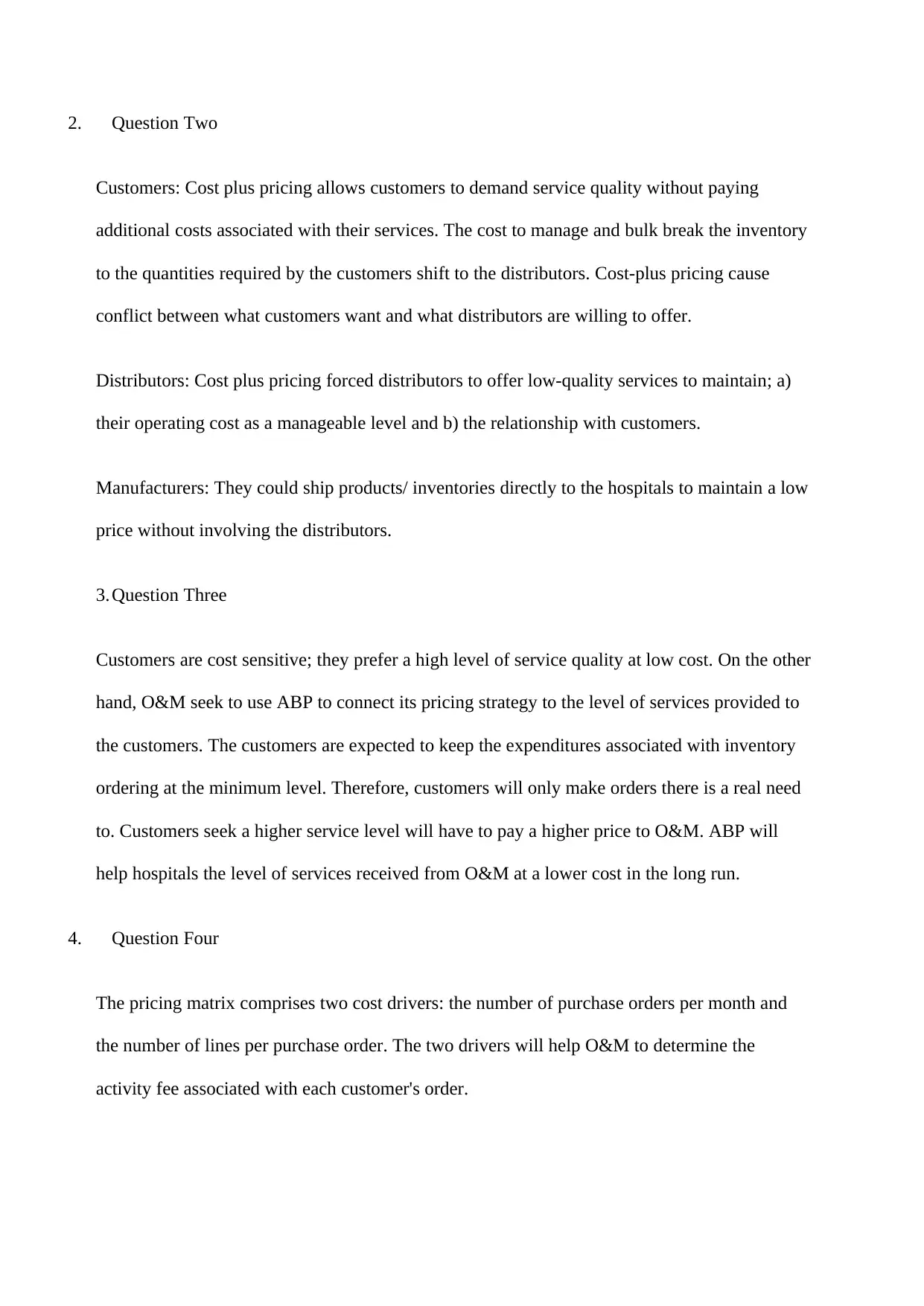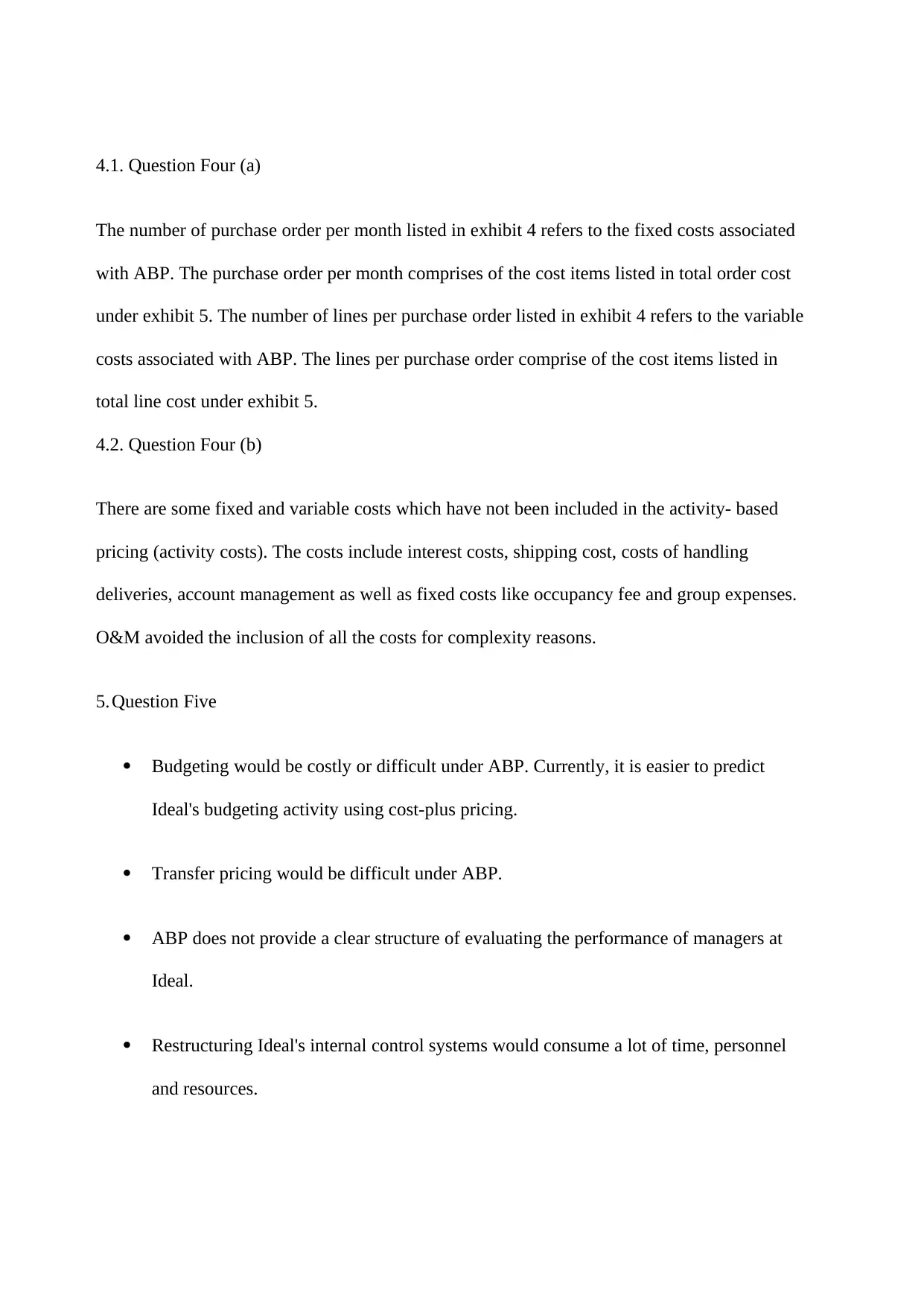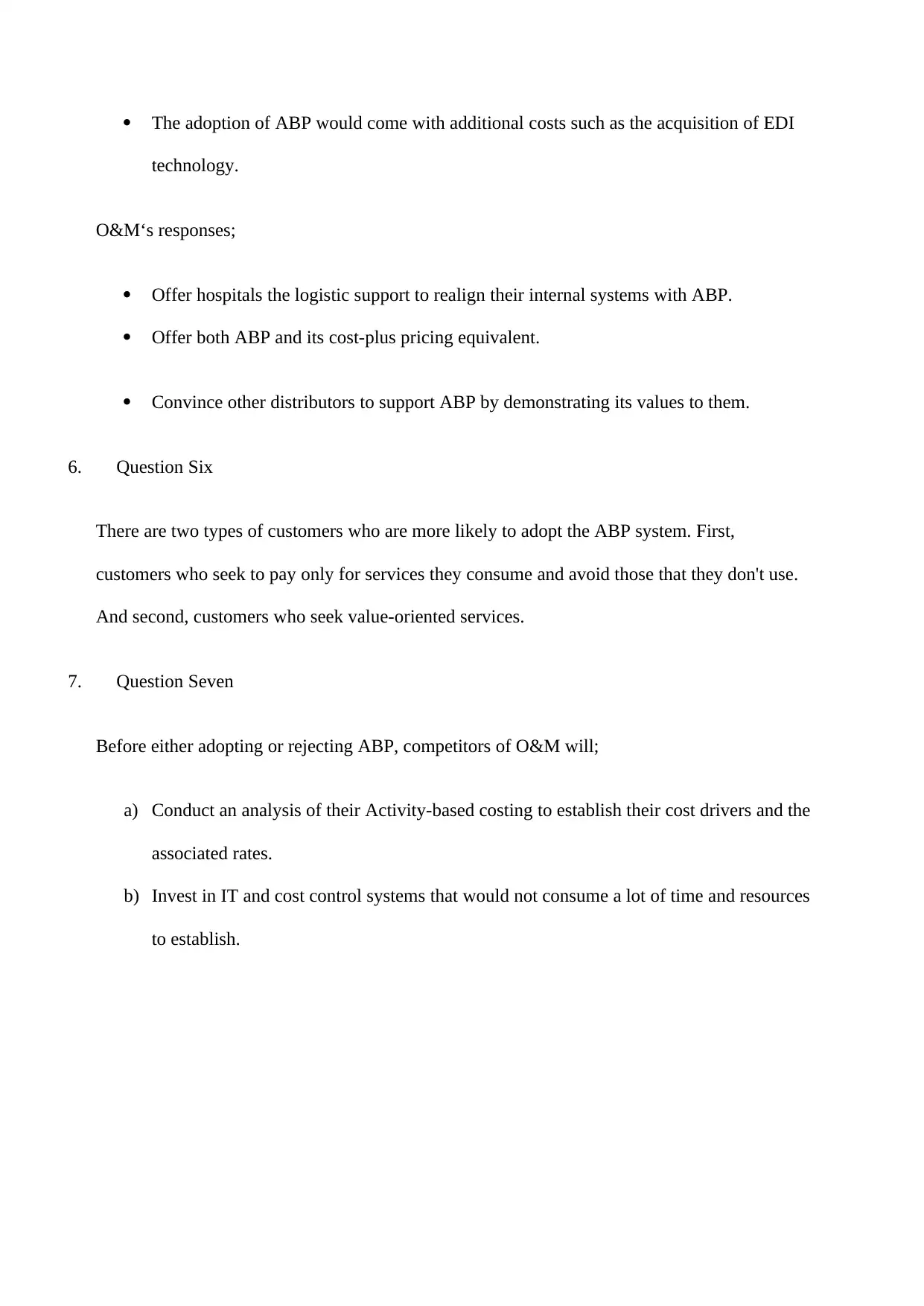Managerial Accounting O&M Case Study: Financial Analysis and Solutions
VerifiedAdded on 2021/10/05
|4
|879
|110
Case Study
AI Summary
This case study examines the managerial accounting challenges faced by O&M, a healthcare distributor, focusing on its pricing strategies and customer relationships. The solution analyzes the evolution of distributor roles, comparing traditional and modern responsibilities. It explores the benefits and drawbacks of activity-based pricing (ABP) versus cost-plus pricing for customers, distributors, and manufacturers. The analysis delves into the pricing matrix, cost drivers, and the inclusion of fixed and variable costs. The case study also discusses the implications of ABP on budgeting, transfer pricing, and performance evaluation, along with O&M's proposed responses to these challenges. Finally, it identifies customer types most likely to adopt ABP and the steps competitors should take before implementation. The solution provides a comprehensive overview of the financial and operational considerations in the context of the case.
1 out of 4











![[object Object]](/_next/static/media/star-bottom.7253800d.svg)